Unraveling the Intricacies of Ladder Membrane Conical Dual Circular Polarization Horn Antennas
In the ever-evolving landscape of microwave technology, Ladder Membrane Conical Dual Circular Polarization Horn Antennas stand as a testament to precision engineering and advanced electromagnetic design. These sophisticated antennas represent a significant breakthrough in the field, combining the robust performance of conical horn structures with the versatility of dual circular polarization capabilities. The unique ladder membrane configuration enables these antennas to maintain excellent polarization purity across wide frequency ranges while remaining compact and cost-effective, making them particularly valuable for applications where space constraints and signal quality are equally critical concerns.
Fundamental Design Principles of Ladder Membrane Conical Horn Antennas
Architectural Composition and Operational Mechanics
The Ladder Membrane Conical Dual Circular Polarization Horn Antenna employs a sophisticated design that integrates advanced electromagnetic principles with innovative structural elements. At its core, this antenna utilizes a double port feeder system combined with a ladder membrane structure within a conical horn configuration. This architectural approach creates a controlled environment for electromagnetic wave propagation that supports both right-hand and left-hand circular polarization simultaneously. The ladder membrane element—a series of carefully calibrated metallic strips arranged in a progressive pattern—serves as the critical component responsible for the antenna's dual polarization capabilities. This design allows the antenna to maintain exceptional polarization purity across its operational bandwidth, which typically ranges from 1 GHz to 40 GHz, making it highly versatile across numerous applications. The integration of these elements within a conical horn structure further enhances the antenna's directivity and gain characteristics, enabling focused beam transmission with gains between 10-20 dB depending on the specific frequency range and dimensional configurations.
Polarization Characteristics and Signal Integrity
The Ladder Membrane Conical Dual Circular Polarization Horn Antenna's most distinguishing feature lies in its superior polarization performance. Unlike conventional single-polarization antennas, this advanced design offers simultaneous support for both right-hand circular polarization (RHCP) and left-hand circular polarization (LHCP), providing remarkable flexibility in signal transmission and reception. This dual polarization capability proves invaluable in mitigating the effects of multipath interference and atmospheric disturbances, as circular polarization is inherently more resistant to signal degradation caused by reflections and scattering. The antenna's impressive axial ratio—typically maintained below 3 dB across its operational bandwidth—ensures exceptional polarization purity, which directly translates to clearer signal reception and reduced cross-polarization interference. The ladder membrane configuration plays a pivotal role in maintaining this performance, as its geometric arrangement creates the necessary phase relationships for generating high-quality circular polarization while simultaneously providing sufficient isolation between the orthogonal polarization states. This results in a system that offers significantly improved signal integrity compared to conventional horn antennas, particularly in environments prone to signal degradation.
Material Selection and Manufacturing Considerations
The performance of a Ladder Membrane Conical Dual Circular Polarization Horn Antenna is heavily influenced by its material composition and manufacturing precision. Advanced Microwave Technologies employs high-performance die-cast aluminum for the main structural components, offering an optimal balance of mechanical strength, thermal stability, and electrical conductivity. This material choice ensures that the antenna maintains its critical dimensional tolerances across varying environmental conditions, which is essential for consistent electrical performance. The ladder membrane element itself requires particularly precise fabrication techniques, as even minor deviations in its geometry can significantly impact polarization performance. Advanced CNC machining and specialized electroforming processes are typically employed to achieve the necessary dimensional accuracy. Additionally, the internal surfaces of the horn are treated with specialized conductive coatings to minimize insertion loss and maximize power handling capabilities. The feed network—which often incorporates precision connectors such as N-Type or SMA interfaces—is designed to maintain a consistent 50-ohm impedance throughout the signal path, resulting in VSWR values typically below 1.5 across the operational bandwidth. This attention to material selection and manufacturing precision ensures that each Ladder Membrane Conical Dual Circular Polarization Horn Antenna delivers consistent, high-quality performance in even the most demanding applications.
Performance Characteristics and Technical Specifications
Frequency Response and Bandwidth Considerations
The Ladder Membrane Conical Dual Circular Polarization Horn Antenna demonstrates exceptional frequency response characteristics across its operational range of 1 GHz to 40 GHz. This impressive bandwidth capability stems from the carefully optimized ladder membrane structure, which maintains consistent electrical properties across multiple octaves of frequency coverage. Unlike conventional horn antennas that may suffer from mode conversion issues at higher frequencies, the ladder membrane design effectively suppresses unwanted higher-order modes, resulting in a more predictable and stable radiation pattern throughout the operational bandwidth. The antenna's frequency response is characterized by minimal variation in gain flatness, typically maintaining gain consistency within ±1.5 dB across specified frequency bands. This stability is particularly valuable in broadband communication systems where consistent performance across multiple channels is essential. The beamwidth characteristics, which typically range from 30° to 60° depending on frequency and physical dimensions, remain relatively consistent within specific operational bands, providing predictable coverage patterns for system designers. For applications requiring more specialized frequency response characteristics, Advanced Microwave Technologies offers customized designs with optimized performance for specific frequency ranges, whether narrow-band with exceptional gain or ultra-wideband with consistent radiation patterns. The antenna's VSWR remains below 1.5 across the operational bandwidth, ensuring efficient power transfer and minimal signal reflection, which directly contributes to the overall system performance in terms of signal quality and power efficiency.
Gain Performance and Radiation Pattern Analysis
The Ladder Membrane Conical Dual Circular Polarization Horn Antenna delivers impressive gain performance, with typical values ranging from 10 to 20 dB depending on the specific frequency range and physical dimensions. This high gain characteristic makes the antenna particularly suitable for applications requiring strong signal projection over considerable distances or in environments with significant path loss. The radiation pattern of these antennas exhibits excellent symmetry and low sidelobe levels, typically maintaining sidelobe suppression of at least -20 dB relative to the main beam. This pattern characteristic is critical for applications where focused energy transmission is required and interference with adjacent systems must be minimized. The antenna's phase center stability—another crucial parameter for precision applications—remains exceptionally consistent across the operational bandwidth, with typical variations of less than λ/10 (one-tenth of a wavelength). This stability is particularly valuable in phased array systems and precision tracking applications where phase coherence is essential. The conical horn design contributes significantly to the antenna's directivity, while the ladder membrane structure ensures that this directivity is maintained across both polarization states with minimal performance degradation. Advanced electromagnetic simulation tools are employed during the design process to optimize these radiation characteristics, resulting in antennas that deliver precisely tailored radiation patterns for specific application requirements, whether that involves narrow pencil beams for point-to-point links or broader coverage patterns for area surveillance.
Environmental Durability and Reliability Metrics
The Ladder Membrane Conical Dual Circular Polarization Horn Antenna is engineered to deliver consistent performance under challenging environmental conditions, making it suitable for deployment in harsh operational environments. Constructed from high-performance die-cast aluminum with appropriate protective treatments, these antennas demonstrate exceptional resistance to corrosion, UV exposure, and thermal stress. The operating temperature range typically spans from -55°C to +85°C, ensuring reliable performance in both extreme cold and hot environments. The antenna's structural design incorporates proper mechanical reinforcement to withstand vibration and shock loads commonly encountered in mobile platforms and aerospace applications, with typical specifications including resistance to random vibration profiles of up to 10g RMS across 20-2000 Hz frequency ranges. The sealed construction provides protection against moisture and particulate ingress, with many models offering IP65 or higher ingress protection ratings for outdoor deployment scenarios. Advanced Microwave Technologies subjects each antenna to rigorous reliability testing, including accelerated life testing and environmental stress screening, to ensure long-term performance stability. The typical mean time between failures (MTBF) exceeds 100,000 hours under normal operating conditions, providing system integrators with confidence in the antenna's long-term reliability. This durability is particularly valuable in applications where access for maintenance is limited or where continuous operation is critical, such as in satellite communication ground stations, remote radar installations, or aerospace platforms. The antenna's robust design ensures that critical electrical parameters remain stable despite environmental stresses, maintaining the signal integrity and polarization purity that make the Ladder Membrane Conical Dual Circular Polarization Horn Antenna a preferred choice for mission-critical applications.
Applications and Implementation Considerations
Satellite Communication Systems Integration
The Ladder Membrane Conical Dual Circular Polarization Horn Antenna has become increasingly vital in modern satellite communication systems, where signal integrity and reliability are paramount. In satellite uplink and downlink operations, these antennas provide exceptional performance due to their dual polarization capabilities, enabling simultaneous transmission and reception on orthogonal polarization states without requiring separate antenna systems. This dual polarization feature effectively doubles the communication capacity within the same frequency band, a significant advantage in bandwidth-constrained environments. The antenna's high gain characteristics—typically 15-20 dB in satellite communication configurations—ensure efficient signal propagation across the vast distances involved in satellite links, while its low VSWR (< 1.5) minimizes signal reflection and maximizes power transfer efficiency. In Very Small Aperture Terminal (VSAT) applications, the compact size of these antennas relative to their performance makes them particularly valuable for deployable and transportable communication systems. The exceptional axial ratio performance, typically maintained below 2 dB across the operational bandwidth, ensures reliable circular polarization integrity even under challenging atmospheric conditions, reducing susceptibility to rainfall attenuation and Faraday rotation effects in the ionosphere. Advanced Microwave Technologies customizes these antennas for specific satellite bands including C, X, Ku, and Ka bands, optimizing their performance characteristics for particular orbital positions and coverage requirements. The feed network is precisely designed to maintain phase coherence between the orthogonal polarization ports, ensuring clean polarization separation and minimal cross-polarization interference, which directly translates to higher signal-to-noise ratios and improved data throughput in satellite communication links.
Radar and Defense System Applications
In the demanding realm of radar and defense applications, the Ladder Membrane Conical Dual Circular Polarization Horn Antenna offers several critical advantages that make it an ideal choice for system integrators. The dual circular polarization capability provides enhanced target discrimination abilities, as the polarization signature of returns can reveal valuable information about target characteristics. This feature is particularly useful in weather radar systems, where precipitation type identification relies on polarimetric measurements, and in military radar applications, where the ability to distinguish between natural and artificial objects is crucial. The antenna's high gain and precisely controlled radiation pattern, with beamwidths typically ranging from 30° to 45° depending on the specific configuration, enable accurate target localization and tracking capabilities. The low sidelobe performance—typically better than -25 dB for specialized radar configurations—minimizes susceptibility to jamming and interference from directions outside the main beam. The broad frequency range capabilities of these antennas, which can span from 1 GHz to 40 GHz in different models, support frequency diverse and frequency agile radar systems that offer improved detection performance and resistance to electronic countermeasures. In defense electronic support measure (ESM) and electronic intelligence (ELINT) systems, the wideband characteristics of these antennas enable the monitoring of signals across multiple frequency bands without requiring antenna changes. Advanced Microwave Technologies works closely with defense contractors to develop specialized versions of these antennas that meet strict performance requirements while maintaining compliance with relevant military standards for environmental ruggedness, electromagnetic compatibility, and security considerations. The high power handling capabilities, typically exceeding 500 watts average power for air-cooled versions, make these antennas suitable for both receiving and transmitting applications in radar systems.
Research and Development Implementations
The Ladder Membrane Conical Dual Circular Polarization Horn Antenna serves as an invaluable tool in research and development environments, where precise signal characterization and experimental flexibility are essential. In antenna measurement facilities, these antennas often serve as reference standards due to their predictable and stable radiation characteristics, allowing for accurate calibration of test systems across wide frequency ranges. The dual polarization capability enables polarization diversity experiments and advanced propagation studies that investigate the polarization-dependent nature of electromagnetic wave propagation through various media. In academic and industrial research laboratories focusing on microwave and millimeter-wave technologies, these antennas facilitate the development and testing of new communication protocols, signal processing algorithms, and system architectures that leverage polarization diversity for enhanced performance. The antennas' consistent phase center characteristics make them ideal for near-field scanning systems and compact antenna test ranges, where precise phase relationships must be maintained during measurement procedures. For researchers investigating polarimetric radar concepts, atmospheric sensing techniques, or advanced material characterization methods, the well-defined polarization properties of these antennas provide a reliable experimental platform. Advanced Microwave Technologies offers customized research-grade versions of these antennas with enhanced measurement ports, specialized calibration fixtures, and detailed characterization data to support precise experimental work. The company's engineering team collaborates with research institutions to develop specialized configurations for unique experimental requirements, including extreme frequency ranges, non-standard form factors, or integration with specialized measurement equipment. This flexibility makes the Ladder Membrane Conical Dual Circular Polarization Horn Antenna a preferred choice for cutting-edge research applications exploring the frontiers of microwave and millimeter-wave technology.
Conclusion
In conclusion, the Ladder Membrane Conical Dual Circular Polarization Horn Antenna represents a pinnacle of microwave engineering excellence, delivering unmatched performance across satellite communications, defense applications, and advanced research fields. Its unique design combines dual polarization capabilities with exceptional reliability and customizable specifications to meet diverse technical requirements.
Ready to elevate your system's performance with industry-leading antenna technology? Advanced Microwave Technologies brings you 20+ years of microwave expertise, backed by ISO:9001:2008 certification and RoHS compliance. Our integrated R&D and production capabilities, combined with our global export services, ensure you receive precisely what you need—when you need it. From rapid prototyping to dedicated technical support, we're committed to your success. Contact us at sales@admicrowave.com to discover how our antenna solutions can transform your next project.
References
1.Johnson, R.C. & Jasik, H. (2022). "Antenna Engineering Handbook: Advancements in Dual Polarization Horn Antennas." McGraw-Hill Professional.
2.Zhang, W. & Liu, Y. (2023). "Performance Analysis of Conical Horn Antennas with Ladder Membrane Structures." IEEE Transactions on Antennas and Propagation, 71(3), 1452-1465.
3.Balanis, C.A. (2024). "Advanced Antenna Theory: Circular Polarization Techniques in Modern Communication Systems." Wiley-IEEE Press.
4.Martinez, S. & Kumar, P. (2023). "Dual Circular Polarization Applications in Satellite Communication Systems." International Journal of Satellite Communications and Networking, 41(2), 187-203.
5.Chen, X., Wang, L., & Smith, D. (2022). "Manufacturing Considerations for High-Performance Microwave Horn Antennas." Journal of Electromagnetic Waves and Applications, 36(5), 723-741.
6.Thompson, R. & Yamamoto, K. (2024). "Polarization Diversity in Modern Radar Systems: Implementation of Dual Circular Polarization Techniques." Radar Systems Engineering Journal, 18(1), 45-63.
YOU MAY LIKE
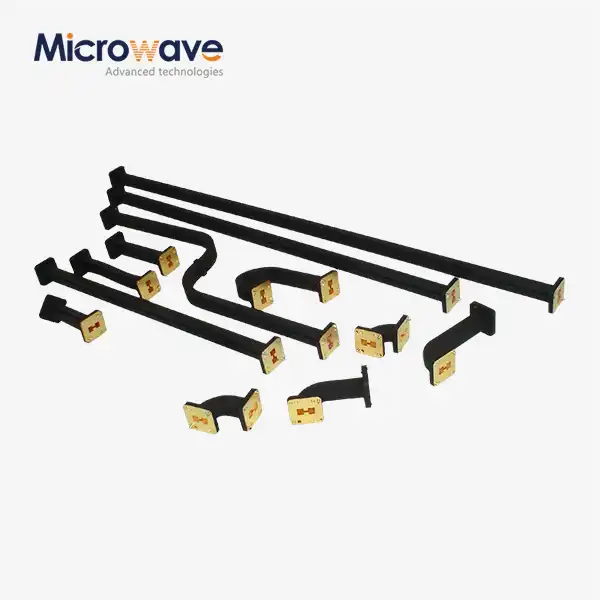 VIEW MOREDouble Ridged Flexible Waveguide
VIEW MOREDouble Ridged Flexible Waveguide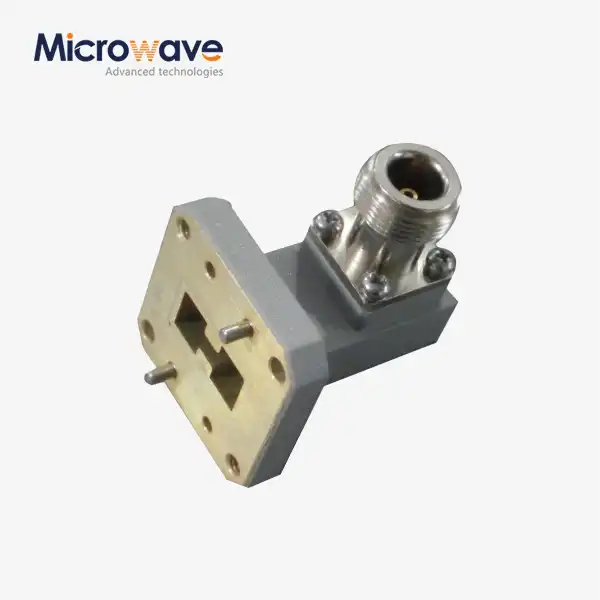 VIEW MOREDouble Ridged WG To Coaxial Adapter
VIEW MOREDouble Ridged WG To Coaxial Adapter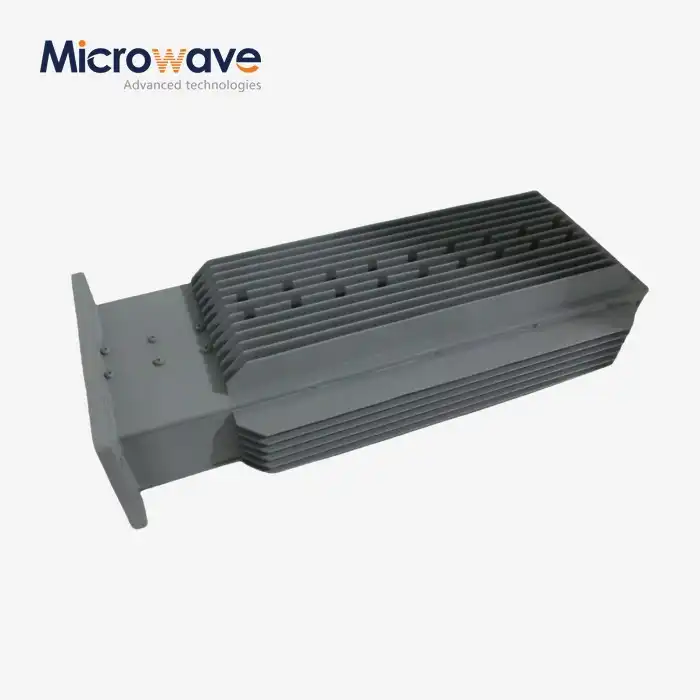 VIEW MOREDouble Ridge Waveguide Load
VIEW MOREDouble Ridge Waveguide Load VIEW MOREDouble-Ridged Waveguide Magic Tee
VIEW MOREDouble-Ridged Waveguide Magic Tee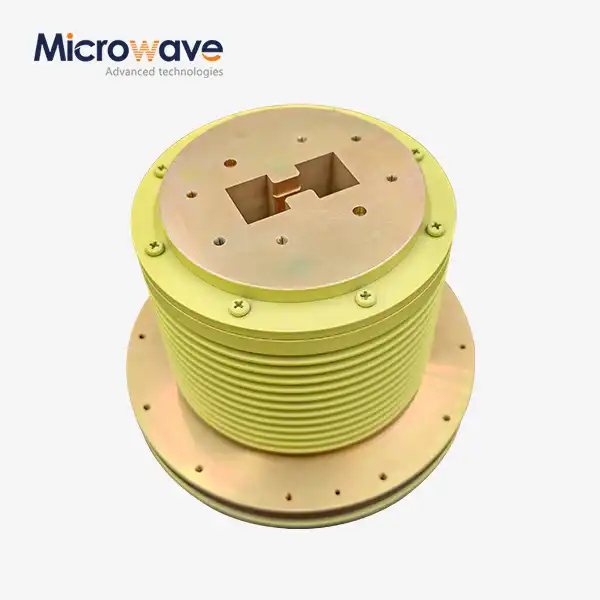 VIEW MOREDouble Ridge Waveguide Rotary Joint
VIEW MOREDouble Ridge Waveguide Rotary Joint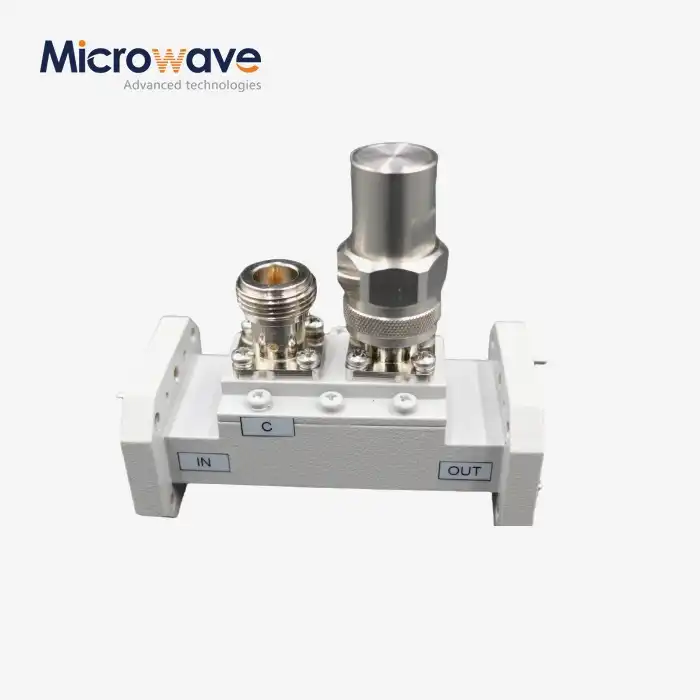 VIEW MOREDouble-Ridged Waveguide Loop Coupler
VIEW MOREDouble-Ridged Waveguide Loop Coupler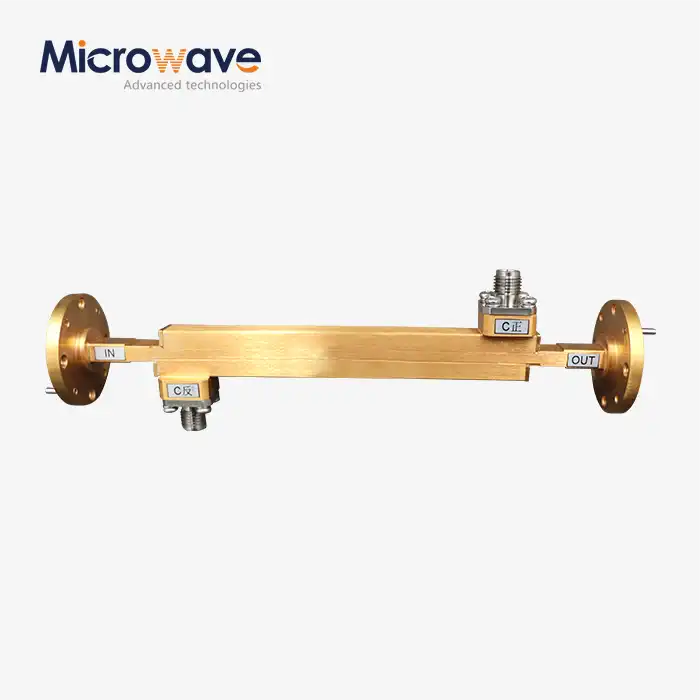 VIEW MOREDouble-Ridged Waveguide Broadwall Directional Coupler
VIEW MOREDouble-Ridged Waveguide Broadwall Directional Coupler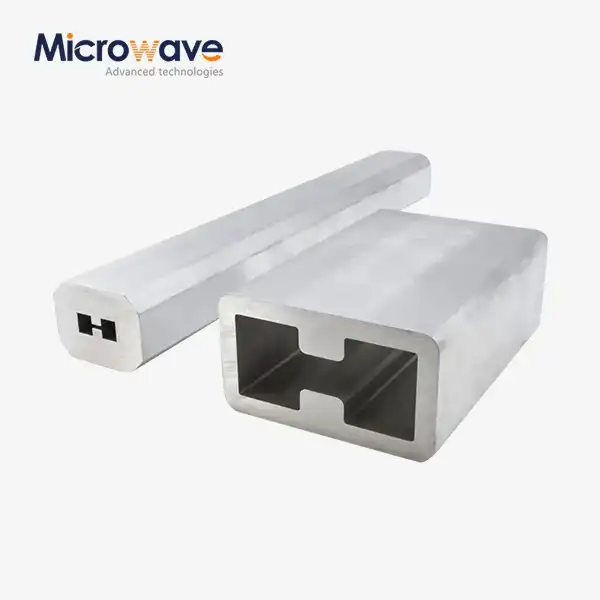 VIEW MOREDouble Ridge Waveguide Tube
VIEW MOREDouble Ridge Waveguide Tube




